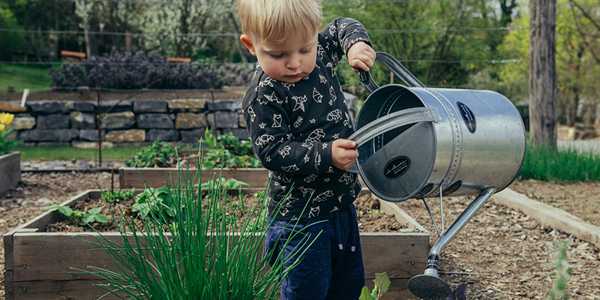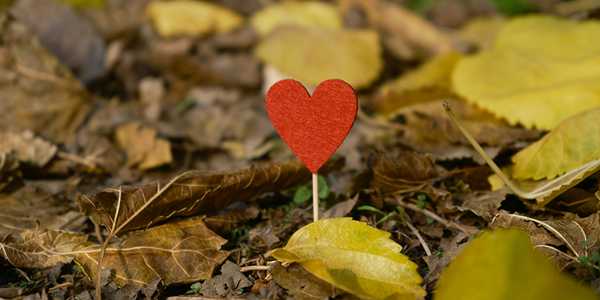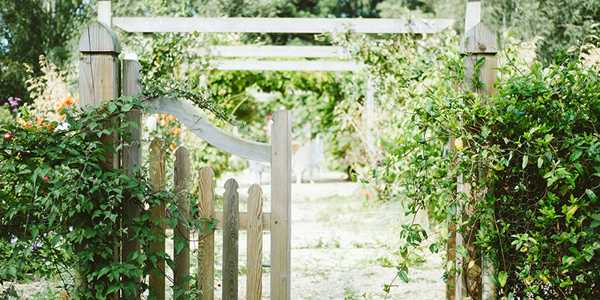10 Easy Garden Projects You Can Do with Your Kids
Are you looking for fun and engaging ways to spend quality time with your kids while nurturing a love for nature? Do you want to transform your backyard into an exciting playground for learning and creativity? Gardening is a fantastic opportunity to spark curiosity, build essential skills, and create lasting memories with your little ones.
Imagine your kids getting their hands dirty, watching seeds sprout into vibrant plants, or creating unique art pieces that brighten your garden. But where do you start? What projects are both easy and entertaining for children of all ages?
We’ll explore 10 captivating garden projects you can do with your kids designed to educate, inspire, and foster a sense of wonder about the natural world. So grab your gardening gloves and tools, and let’s dive into these delightful activities that will keep your kids engaged and excited about gardening.

1. Starting a Vegetable Garden
Planting a vegetable garden teaches children about healthy eating and where their food comes from. They’ll learn to nurture plants from seed to harvest, which can be immensely rewarding. Use child-friendly tools and gloves to make the process enjoyable. Celebrate the harvest by cooking together with the vegetables they’ve grown.
Choose the right location: Find a sunny spot in your yard or use containers if space is limited.
Select easy vegetables: Start with easy-to-grow vegetables like tomatoes, radishes, or lettuce.
Prepare the soil: Teach kids how to turn the soil, add compost, and make it ready for planting.
Planting: Allow the kids to plant the seeds and label them for easy identification.
Watering and care: Create a watering and let them take turns caring for the plants.
2. Creating a Butterfly Garden
A butterfly garden is not only beautiful but also educates about ecosystems and the role of pollinators in our environment. To encourage kids to spend time watching butterflies, add a small seating area for observation. Use books or online resources to learn about different butterfly species that might visit your garden.
Select a location: Choose a sunny area of your yard that can be easily viewed.
Choose butterfly-friendly plants: Incorporate milkweed, coneflower, and butterfly bush.
Planting Together: Get the kids involved in digging and planting, emphasizing the importance of each plant for attracting butterflies.
Provide a water source: A shallow dish with water can serve as a butterfly drinking spot.
3. Building a Birdhouse
Constructing a birdhouse teaches kids about local wildfires and the importance of providing habitats for birds. Research local bird species to attract specific birds. Keep a birdwatching journal to record which birds visit the house.
Gather materials: You’ll need untreated wood, nails, and non-toxic paints.
Plan the design: Work together to create a simple birdhouse design or find plans online.
Assemble the house: Let the kids help with measuring, hammering, and painting the birdhouse.
Choose a location: Hang or place the birdhouse in a suitable location in your yard.
4. Making a Fairy Garden
Fairy gardens encourage creativity and storytelling, making gardening magical and fun for children. Change the theme with the seasons by adding seasonal decorations. Encourage storytelling by inventing stories about the fairies that live in the garden.
Choose a container: Use a large pot or a wooden crate as your garden base.
Select miniature plants: Look for small plants like moss, succulents, or tiny ferns.
Add fairy accessories: Gather mini figurines, pebbles, and decorations to create a whimsical play.
Arrange the garden: Let the kids design the layout of their fairy garden, promoting imaginative play.
5. Planting Flowers For Pollinators
This project helps children learn about the vital role of bees and other pollinators in our ecosystem. Discuss the importance of pollinators and how to protect them. Create a pollinator chart to identify the different species that visit your flowers.
Select a pollinator-friendly spot: Find an area with plenty of sun.
Choose flowers: Opt for colorful, nectar-rich flowers like sunflowers, zinnias, and lavender.
Create a flower bed: Let the kids help with digging, planting, and watering.
Observe the pollinators: Spend time watching the bees and butterflies visiting the flowers.
6. Creating a Sensory Garden
A sensory garden is designed to stimulate the senses—sight, sound, smell, touch, and taste—making it a perfect easy garden project for your kids. Include pathways made of stones or mulch for a tactile experience. Encourage kids to explore and describe how each plant feels, smells, or looks.
Choose a location
Find a spot in your yard that receives sunlight and is accessible.
Select Sensory plants
Sight: Bright flowers like marigolds or zinnias.
Sound: Grasses that rustle in the wind.
Smell: Fragrant herbs like lavender or mint.
Touch: Fuzzy plants like lamb’s ear.
Taste: Edible plants like strawberries or cherry tomatoes.
Design together
Let the kids decide where to plant each type of sensory, encouraging creativity.
7. Making Seed Bombs
Seed bombs are a fun, hands-on way for kids to learn about seeds and the importance of planting. Discuss the types of seeds used and where they can be planted. Encourage kids to throw their seed bombs in bare patches of land or their gardens.
Gather Materials: you’ll need seeds (wildflowers work well), clay, compost, and water.
Mix the ingredients: In a bowl, mix equal parts clay and compost, then add seeds and water until it forms a dough.
Shape into Balls: Roll the mixture into small balls (about the size of a marble).
Dry the seed bombs: Let them dry for a day or two in a cool, shaded area.
8. Starting a Compost Bin
Composing teaches children about recycling organic waste and how it benefits the environment, making it a fantastic garden project with kids. Use a chart to track what materials go into the compost bin. Discuss the benefits of composting and how it enriches garden soil. This hands-on activity not only fosters environmental awareness but also instils a sense of responsibility in your younger gardeners.
Choose a container: Use a plastic bin, wooden box, or a simple pile in the corner of the garden.
Gather compost materials: Teach kids what can and cannot go into the compost (fruit scraps, vegetable peels, coffee grounds, grass clippings).
Layering: Show them how to layer green (nitrogen-rich) and brown (carbon-rich) materials for optimal composting.
Maintenance: Let kids help turn the compost every few weeks and monitor the temperature.

9. Creating Garden Markers
Garden markers help kids learn plant names and care while adding a personal touch to the garden. This is an amazing garden activity for your kids. Discuss the different plants and their growth habits as they create markers. Use an opportunity to learn about plant care and growth stages.
Gather materials: Use stones, wooden popsicle sticks, or old utensils. Paints, markers, or engraving tools can be used for decoration.
Get creative: Let kids paint or write the names of plants on the markers. Encourage them to decorate with drawings or colors.
Install in the garden: Let kids paint or write the names of plants on the markers. Encourage them to decorate with drawings or colors.
10. Building a Raised Garden Bed
Constructing a raised garden bed provides kids with hands-on experience in building, planting, and maintaining a garden. Discuss the benefits of raised beds, such as better drainage and ease of access. Create a garden journal where kids can track their plants’ growth and any changes they observe.
Select a location: Find a sunny spot in your yard with good drainage.
Gather material: Use untreated wood (like cedar orpine), nails, and soil. You can also involve them in picking out plants to grow.
Build together: Teach kids how to measure and cut the wood (with adult supervision) and assemble the bed.
Fill with soil: Let the kids help fill the bed with a mixture of soil and compost.
Plant together: Choose easy-to-grow plants like herbs, radishes, or lettuce for the kids to plant.
Let The Fun Begin – Start Your Garden Project With The Kids Today!
Are you ready to embark on an exciting journey of discovery and creativity? Starting a garden project for kids is not just about planting seeds, it’s an adventure that fosters learning and strengthens family bonds, imagine your little ones digging in the soil, watching their plants grow, and taking pride in their gardening accomplishments.
These garden activities with kids are perfect for nurturing curiosity and developing a sense of responsibility while making unforgettable memories together. So, grab your gardening gloves and tools, and let’s get started!
FAQs
How do you keep kids entertained in the garden?
Engage kids with hands-on activities like planting seeds, painting pots, scavenger hunts, or nature crafts. Providing tools and letting them explore encourages creativity and keeps them entertained.
How to make a children’s garden?
Choose a small, accessible area and involve kids in the planning process. Select easy-to-draw plants, colorful flowers, or vegetables. Add decorative elements like stepping stones or garden art to make it inviting.
How do you make a magic garden for kids?
Create a magic garden by incorporating whimsical elements like fairy houses, colorful decorations, and unique plant choices. Use flower colors and shapes to spark imagination, and encourage storytelling during garden visits.



















